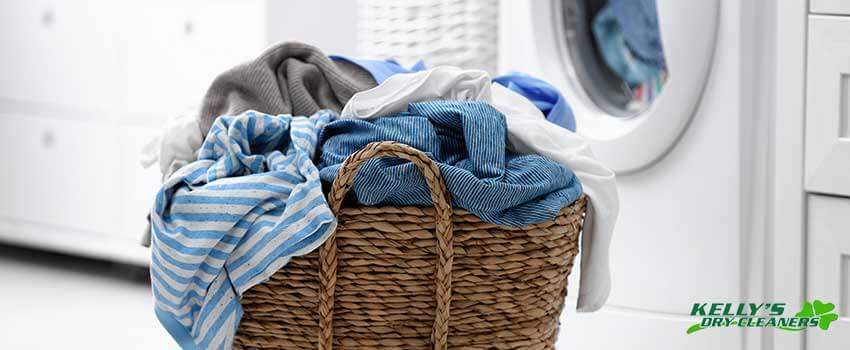Dry cleaning is a process that has been used even back in Roman times. Back then, people used ammonia to clean woolen clothes as this type of material shrinks when exposed to hot water. Petroleum-based solvents, such as kerosene and gasoline, were also used in dry cleaning. Because these solvents are highly flammable, people discontinued their use for safety reasons.
In the 1930s, commercial cleaners started using perchloroethylene — more aptly known as perc. Due to its efficacy, some cleaners still use perc in their dry cleaning processes. Despite being an effective cleaner, perc emits a chemical odor and is considered carcinogenic. Nowadays, commercial cleaners are encouraged to regulate the use of chemicals and promote a safer and more eco-friendly way of cleaning clothes.
Hand Wash or Dry Clean?
These days, some people are still confused about whether to bring their clothes to professional cleaners. The key to knowing what to do with your laundry is looking at the care label of your clothes. Even shirts and jeans can be labeled as “dry clean only,” so it is recommended to check every item in your laundry.
To those asking the question, “Can you wash ‘dry clean only’ clothes at home?” The answer is yes, and there are different DIY dry cleaning kits available on the market that you can buy and use.
How to Wash “Dry Clean Only” Clothes
- Use the Proper Detergent and Water Temperature – For “dry clean only” clothes, it is best to use cold water as hot water can cause them to shrink. It is also recommended to use gentle detergents to prevent them from getting damaged.
- Consider Hand Washing or Setting Your Washer to Gentle Cleaning Mode – You can use your washer as long as it is set to gentle cleaning mode, but using your washer does not guarantee that your clothes will not be damaged. To avoid damaging clothes, consider handwashing. This way, you have control over the pressure exerted on them.
- Wash Clothes Separately – To prevent dye-transfer stains from damaging your clothes, the best option you have is to wash them separately. By separately, it means that you have to wash each piece one by one.
- Air-Dry Your Clothes – Dryers can damage your clothes. For that reason, “dry clean only” clothes should only be air-dried.
What Happens if You Wash “Dry Clean Only” Clothes
There are many things that can happen if you wash “dry clean only” clothes without knowing the proper way to do so. Some of which are the following:
- Your clothes might shrink or stretch out of shape
- Colors might fade or bleed
- Fabric pilling might occur
- Stubborn stains might remain
- Delicate trimmings, such as beads and sequins, might get damaged
When to Bring Clothes to the Dry Cleaners
While it is possible to wash “dry clean only” clothes at home, it does not guarantee that your clothes will come out in good condition. Clothes will still get damaged no matter how careful you are when washing them. Bringing them to professional dry cleaners is still the best option.
Besides the care label, there are also things to look out for if you want to know when to seek help from professional dry cleaners. Here they are:
- There are stains and dirt on your clothes, and you have no idea how to remove them.
- Your clothes have tucks or pleats.
- Your clothes are made up of stiff fabric with stabilizers and other types of finishes.
- Your clothes are made up of rayon, acetate, silk, velvet, wool, and triacetate.
- Your clothes are made up of fiber that is not familiar to you.
- Your clothes are made up of leather or suede.
- Your clothes can cause dry transfer stains.
- Your clothes are designed like suits or coats.
- Your clothes are lined.
- Your clothes are expensive or have sentimental value to you.
- Your clothes are old and susceptible to damage.
The Process of Dry Cleaning Clothes
Different dry cleaners have their own processes of cleaning clothes, but this is what usually happens when you bring your laundry to them:
1. Tagging the Clothes
First, your clothes are tagged depending on the type of fabric they are made up of. The purpose of tagging the clothes is to identify similar fabrics, which will be cleaned together.
2. Inspecting the Clothes
After tagging, professional dry cleaners inspect clothes to see if there are rips, missing buttons, or tears. The damages are noted by professional cleaners. Some clothes may be returned to the owner, and some can still be dry cleaned.
3. Pre-treating Stains
If your clothes have stains, it is best to inform professional dry cleaners how the stains happened. By doing so, they will be able to determine the best treatment needed to remove the stains.
4. Dry Cleaning the Clothes
After the stains are treated, the clothes will be cleaned using water-free chemical solvents. In the machine, clothes will be gently agitated to remove dirt. Then, the chemical will be drained, and the clothes will be rinsed with another solution to ensure that they are thoroughly cleaned.
5. Checking for Stubborn Stains
While dry cleaning with chemical solvents brings desirable results, some stains are difficult to get rid of. After cleaning the clothes, professional dry cleaners perform another round of inspections to see if there are stubborn stains or dirt. If there are any, the stains will be removed accordingly.
6. Preparing the Clothes for Return
The last step involves getting the clothes ready to be worn. Steaming, repairing, and reattaching buttons are some of the things that happen during this step. After doing all the necessary things, the clothes are then hung or folded and returned to the owners.
Entrust Your Laundry to Professional Dry Cleaners
We at Kelly’s Dry Cleaners provide the best care for every piece of clothing entrusted to us by our clients. We are one of the laundry service providers with green earth cleaners in Durango. Our services do not involve the use of any toxic chemicals, so it is guaranteed that our process is safe for everyone, including the environment. Contact us for any inquiries or questions about our services. We would be more than happy to assist you!



